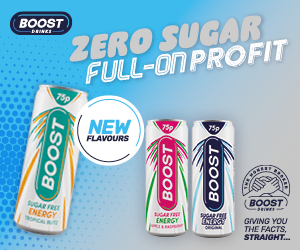In its first Convenience Conversation, Scottish Grocer invited a select group of retailers and representatives from the UK’s leading tobacco and tobacco accessories firms to Edinburgh for a discussion on the EUTPD2 , plain packs and the category’s future.
TOBACCO is a complex category. Affected by the introduction of the Tobacco Display Ban in April last year, the industry faces further upheaval from May 2017, when all products will have to follow EUTPD2 and UK standardised packaging regulations.

At the first SG Convenience Conversations event, in Edinburgh, representatives from British American Tobacco, Imperial Tobacco, JTI, and Republic Technologies UK gathered around the table to share their knowledge and advice.
Offering their perspectives as independent convenience retailers were: Mo Razzaq of Premier Mo’s and Family Shopper. Blantyre; Asmat Saleem of Costcutter, Kelty; and Mohammed Jamil of Day-Today, Renfrew High Street.
First topic was EUTPD2 and plain packs and what retailers will do about storage, pricing and more when only plain pack-compliant stock may be sold, after 20 May 2017.
It quickly became apparent that the wave of legislation had already prompted retailers to think carefully about their tobacco systems.
Mohammed Jamil told how he had swapped a gantry for custom-made spring-loaded drawers in his new store in Renfrew High Street.

It’s fair to say from what we’ve seen out there, from speaking to retailers, that consumers really don’t know what’s coming. – Lindsay Mennell Keating, Imperial Tobacco
Mo Razzaq said he would be keeping his gantries till May, after which he would be likely to review his range and move to drawers. Gantries, he said, are now a “dead zone” and the space could be used more effectively to sell spirits or e-liquids.
However, one advantage gantries have is that they advertise the fact you sell tobacco, countered Ryan McCaffrey, area sales manager for JTI.
And Mohammed Jamil did note that: “We still get customers asking if we sell tobacco, because we don’t have a gantry.
“We have signs, but they don’t read them.”
Gavin Anderson, general sales manager for Republic Technologies UK, said he wonders why retailers don’t make more use of accessories like matches and lighters to indicate they sell tobacco.
Mo Razzaq suggested many were simply unaware that certain tobacco accessories could still be on display.
“We had our matches and lighters hidden away, but we took our lighters out and put them next to the e-liquids and doubled our sales,” he said.
“Retailers need to realise they don’t have to hide them away. It’s one of those markets that’s really profitable and we haven’t tapped into 100%.”

The panel moved on to discuss consumers and how aware they were of the coming changes.
“It’s fair to say from what we’ve seen out there, from speaking to retailers, that consumers really don’t know what’s coming,” said Lindsay Mennell Keating, UK government affairs manager for Imperial Tobacco.
If someone’s used to paying for 5g or 10g there’s no way they’re paying for 30g. They’ll just ask for the cheapest 20 pack and go with that. – Mohammed Jamil
Both Imperial Tobacco and JTI have issued information cards and leaflets to retailers to help them educate their customers, while BAT has inserted its own information cards into its cigarette packs.
Peter Harrison, government relations manager for JTI, pointed to its recently-launched consumer website packchanges.co.uk.
“I suppose there was acknowledgement that the consumer wasn’t as educated on the changes as they should have been, but that’s something we’re looking to rectify currently,” he said.
Most customers won’t care about the changes until they actually happen, said Mo. “I think they’ll be more upset by packs going up to 20s than anything else,” he added.

In that subject, Rob Taylor, UK communications executive for Imperial Tobacco, said a difficulty for all tobacco companies would be communicating the value of their offerings.
“The price of a pack of 20 might actually be better value than a pack of 18, but communicating that will be a challenge,” he said. “What we have seen in Ireland is the growth of the big box format.”
When Scottish Grocer managing editor Patrick Duffy asked if larger packs were something we’d be likely to see in the UK, all eyes turned to Peter Lally, area manager for British American Tobacco, which has already launched large packs – Pall Mall with 23-packs at £7.99 and Rothmans value range, 24-packs in £7.99 PMPs.
“That’s based on the trends in Ireland and Australia,” said Peter. “We’ve reacted quickly. I’m sure others will follow.”
24s, 30s and 40s will ultimately come out on the UK market, he said, and the price per stick (rather than per pack) would become the important value for consumers. A customer faced with buying a minimum 20 pack could be upsold to a pack of 23 for say an extra pound. But it would be up to retailers to communicate that message.
The more you invest in your retailers, the more incentive you give them, the more upselling you’ll see. – Asmat Saleem
Asked how he felt about that, Mo Razzaq said: “If a customer comes in for a pack of cigarettes but they’re not sure what they want, we steer them towards the profit maker. We’re not brand-loyal retailers. We’re focused on margin. It might be that a 23-pack is better value for the customer, but the brand we’ll be upselling is the one that makes us more money.”

Peter said the margin was higher on larger packs.
“If we promote a brand, if we’ve got incentive, then happy days, we’ll do it,” said Asmat Saleem. “It all comes down to margin. Even wholesalers will be able to fight among each other on prices now. Over time they will creep up.”
Patrick asked what effect EUTPD2 would have on the RYO category, with pouch sizes limited to 30g and above.
“This is uncharted territory for the industry anywhere in the world,” said Peter Harrison of JTI. “In the UK, RYO’s been on the up. A lot of our consumers have moved there. It’s going to be a huge upheaval. Some of the bestsellers will be trebling in size,” he noted.
Mohammed Jamil said he expected many RYO smokers to convert to cigarettes. “If someone’s used to paying for 5g or 10g there’s no way they’re paying for 30g. I think they’ll just ask for the cheapest 20 pack and go with that,” he said.
Both Mo and Asmat expressed concerns that a lot of RYO smokers would turn to the illicit trade. “It’s a huge problem,” said Mo. “And there are retailers selling it as well. There’s no fear about being caught. They might get their stock taken off them and a slap on the wrist, but that’s it.”
We’re not brand-loyal retailers. We’re focused on margin. – Mo Razzaq
Lindsay said manufacturers were well aware that it was a growing problem. “There are serious questions we have to ask the government about what it’s doing on this issue,” she said. “We’re expecting the government to launch a formal consultation on sanctions and penalties to tackle the illicit trade. We’re asking the government to take it seriously.”
She said she was hopeful the implementation of a track-and-trace system in the next few years would go some way towards tackling the problem.
The conversation moved on to potential impacts from the effective banning of PMPs on tobacco products. JTI’s Ryan McCaffrey said its advice for retailers was to stick to charging the RRP or below, to maximise footfall.
But Patrick asked each of the retailers if they were likely to adopt such a policy and none was particularly keen.
 “We tested the ground a year and a half ago with 10s in non-PMP at 9% margin,” said Mo. “There was no dip in sales and they’re still selling well, so we’re not going to go for RRP.”
“We tested the ground a year and a half ago with 10s in non-PMP at 9% margin,” said Mo. “There was no dip in sales and they’re still selling well, so we’re not going to go for RRP.”
Asmat said he would stick to the RRP in one of his stores, where there is quite stiff local price competition, but might go higher at his other store, while Mohammed said he might apply different tactics on different brands and have some fighting brands for price-conscious customerss but a higher margin on other lines.
Mo predicted a lot of retailers’ decisions on pricing would come down to their relationships with reps and what deals could be arranged.
Leter Lally said the dynamic between reps and retailers would be increasingly important, with the role of the rep becoming more like that of a business advisor. That would be crucially important if new products were launched.
“The only avenue we have to reach consumers is through retailers,” he said. “Retailers are our marketing departments. It’s a changed landscape in terms of consumer engagement.”
If that’s the case, reps would have to find a way to spend a lot more time with retailers, said Asmat.
“Retailers are effectively going to become your salesmen,” he said. “So for tobacco companies, the more you invest in your retailers, the more incentive you give them, the more upselling you’ll see.”
As the event drew to a close, Mo steered the conversation back towards the subject of profitability, warning that many smaller stores would not be able to survive unless they increased margin on tobacco.
“Next year will see a fundamental change in how tobacco is sold,” he said. “We’re not there to rip off our customers, but we’ve got to be realistic.”
Asmat agreed, adding: “As your costs go up, you look at where you make most of your sales, and usually it’s cigarettes. Some retailers rely on tobacco for 70% of their business. And if profitability doesn’t improve, there’s nothing they can do except bring down the shutters.”
















